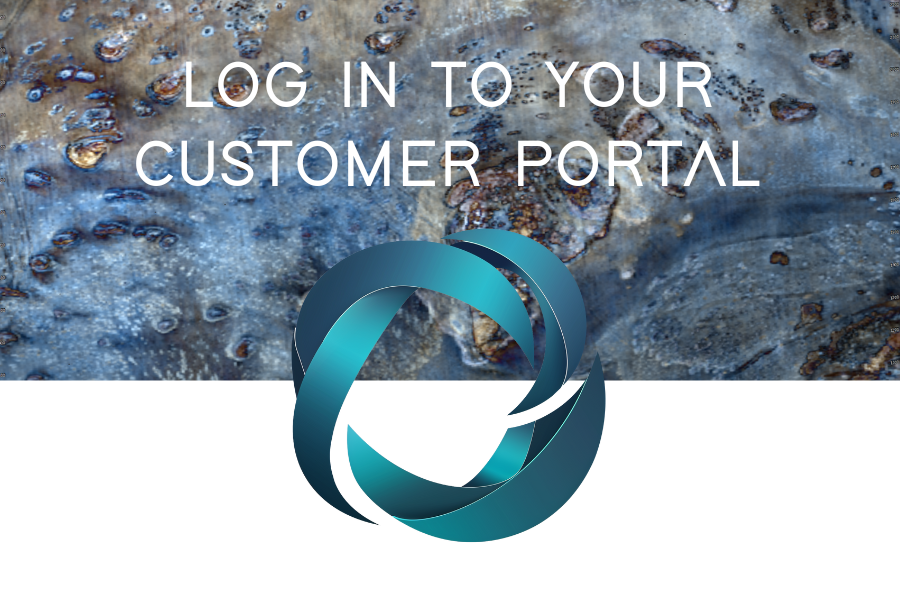A Step Change to Transform Seismic Data into Reservoir Insight
Further bridging the gap between seismic interpretation, petroleum systems, and reservoir modeling—enabling geoscientists to unlock deeper insights from seismic and wellbore data.
Eliis’s 2025 software releases have provided the largest update to PaleoScan™ to date. A mix of new features in seismic interpretation—such as AI GeoBlend 2.0, AI FaultAssist 3.0 and new 2D/3D trackers—along with additional functionalities that further bridge the gap between seismic interpretation, petroleum system and reservoir modelling.
One of the key features of 2025.1 is Prospect Evaluation, where geoscientists can now identify traps for hydrocarbons or CO2, compute volumes, define injection points and visualise fill-spill and leakage points. Leveraging the horizon stack as well as petrophysical properties, Prospect Evaluation is a welcome interactive mapping contribution to petroleum system modelling.
Released above spec, PaleoScan™ 2025.1 is the highlight of our recent development cycles—delivering the rapid, reliable innovation that has made PaleoScan™ a global standard in subsurface workflows for hydrocarbon and low-carbon energy exploration, as well as CCS and shallow soil characterization for offshore wind farm developers.
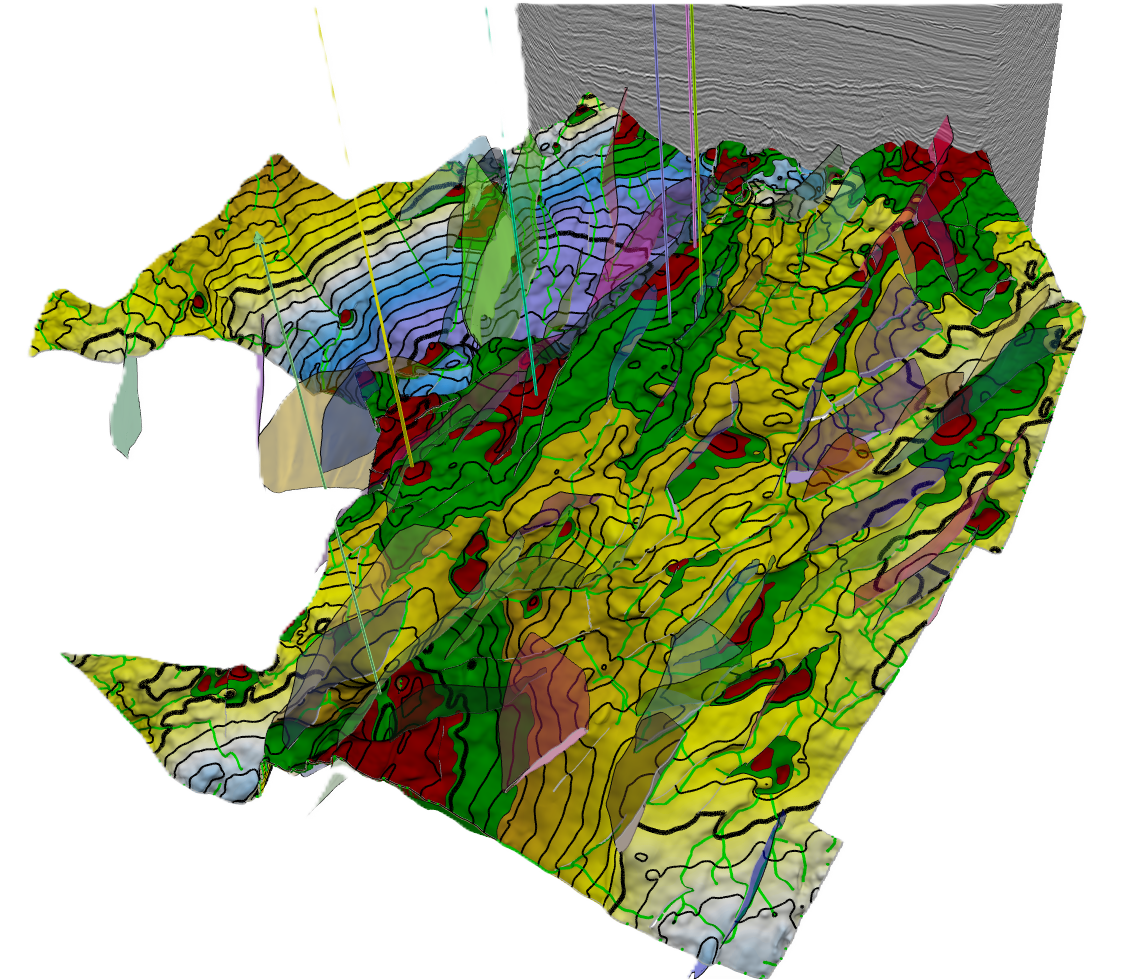
Coupled with quality-of-life improvements such as better multi-screen management, PaleoScan™ 2025 empowers geologists and geophysicists to make the most of their investments in seismic and wellbore data.
NEW FEATURE HIGHLIGHTS
INTERPRETATION
- GeoBlend - Metadata - 2D & 3D Tracker Improvement - Gridding Enhancement - Automatic AVO Crossplotting
DEEP LEARNING
AI GeoSeg 2.0 - AI FaultAssist 3.0
PETROLEUM SYSTEM MODELLING
Prospect Evaluation
TIME/DEPTH
4D Attributes - Depth-Depth Adjustment
2D SEISMIC
2D Seismic Mistie Correction
DATA MANAGEMENT
VDS Cloud - OSDU Wells
DIVE DEEPER
INTERPRETATION
HORIZON PICKING & GRIDDING
Manual interpretation remains a key step in geophysical workflows, whether for rapid regional mapping or for fine-tuning the results of the horizon stack.
In PaleoScan™ 2025, 2D and 3D multi-seed trackers feature enhanced control, improved guidance using an optimal path algorithm, and better gridding through a new convergence gridding method.
AUTOMATIC AVO CROSSPLOTTING
In the Quantitative Interpretation module, it is now possible to automatically generate cross-plots of the AVO classes defined by Intercept and Gradient volumes. Classes can then be exported as volumes or geobodies.
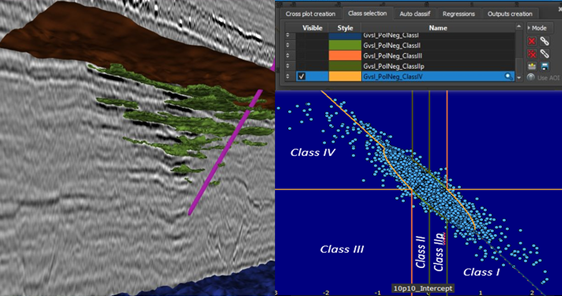
GEOBLEND
Rapidly Screen Geological Features with GeoBlend
GeoBlend is a powerful new tool for blending geological intervals to reveal the stratigraphic distribution of specific amplitudes. By applying an RGB blend to three stratigraphically neighbouring stratal slices. GeoBlend highlights the juxtaposition and connectivity of geological features in your data, such as splays, channels, and lobes. Designed to illuminate thick stratigraphic packages, GeoBlend leverages seismic and attribute data to extract more geological information from your seismic and is a rapid and complementary tool to spectral decomposition.
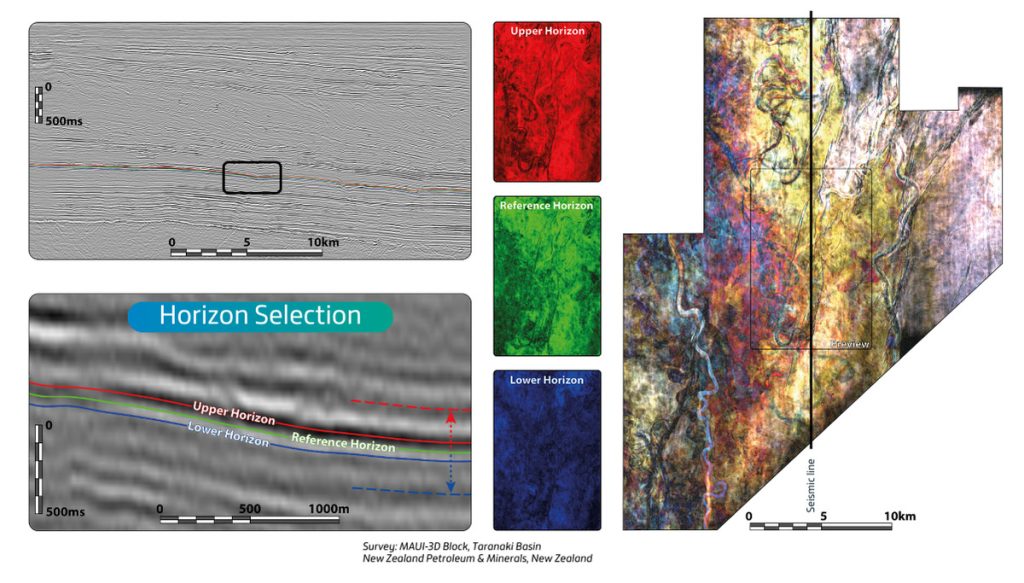
PETROLEUM SYSTEM MODELLING
PROSPECT EVALUATION
For Hydrocarbon and CO2 Migration & Storage
With PaleoScan™ 2025, Eliis enters the Petroleum System Modelling space, bringing interactivity and ease of use to geoscientists.
By leveraging the horizon stack and petrophysical data, geoscientists can now quickly evaluate traps, estimate volumes, define injection point strategies, assess fluid migration impacts (based on injection points), and rank prospects.
Simple yet powerful, the Prospect Evaluation and CCS toolboxes will shorten the time-to-decision for acreage access and the overall portfolio strategy.
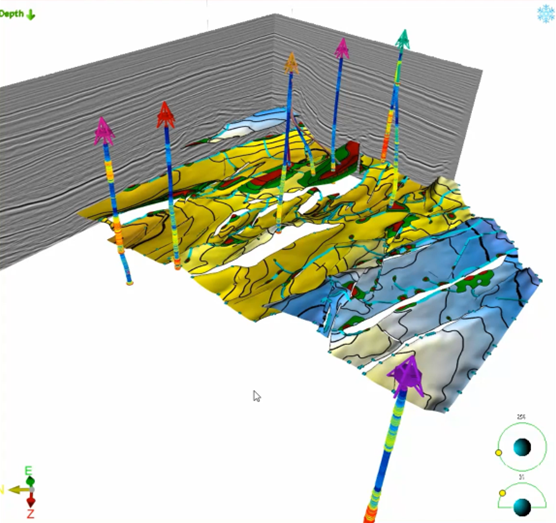
DEEP LEARNING
AI GEOSEG 2.0
Interactively Extract Complex Geobodies with AI GeoSeg
AI GeoSeg leverages the latest image segmentation algorithms to help geoscientists map complex gebodies and apply expert geological knowledge to guide the AI prediction.
This latest upgrade, AI GeoSeg 2.0, can be used in both the seismic and horizon-slice domains and can leverage any attribute available in PaleoScan™. Constraints on the prediction—such as Area Of Interest or top/base regional horizons—can be applied to improve the quality of the resulting probability volume.
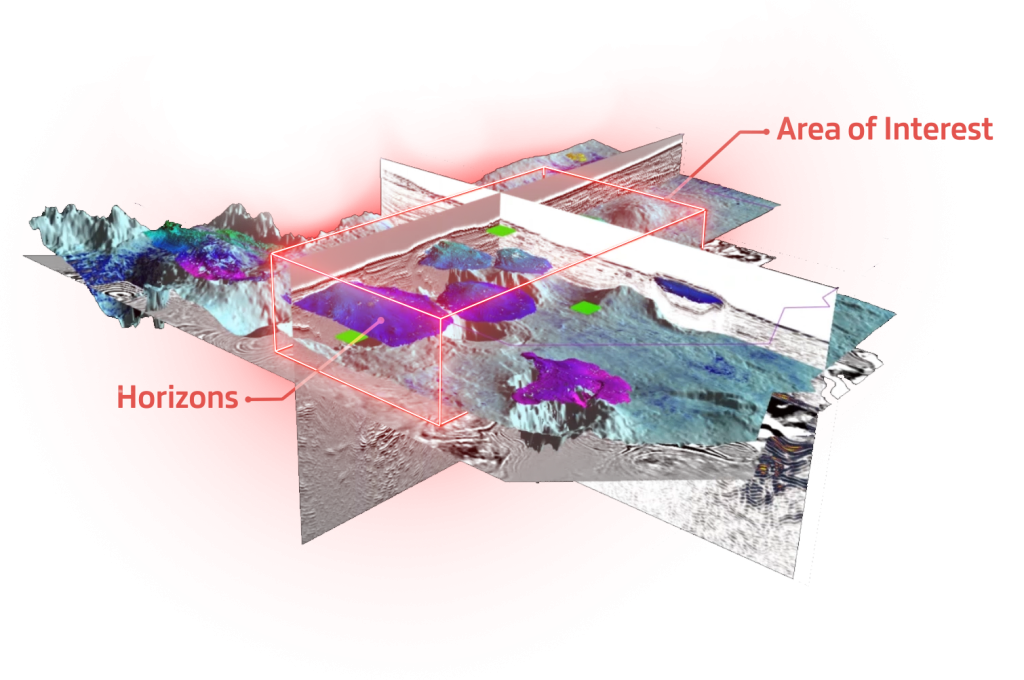
AI FAULTASSIST 3.0
Enhance Volume-Wide Structural Analysis with the Latest Updates of AI FaultAssist
Unveiled in 2024, PaleoScan™ AI FaultAssist—developed in collaboration with Chevron Technical Center—brings a new level of speed and precision to fault detection and extraction. Now in its 3.0 version, AI FaultAssist delivers fault likelihood predictions at every voxel, giving users more control through resampling, cropping, and preview options. It also features improved cleanup of edge effects and false predictions near dead traces, ensuring a cleaner, more reliable output.
AI FaultAssist can be deployed on-prem and in Azure cloud.
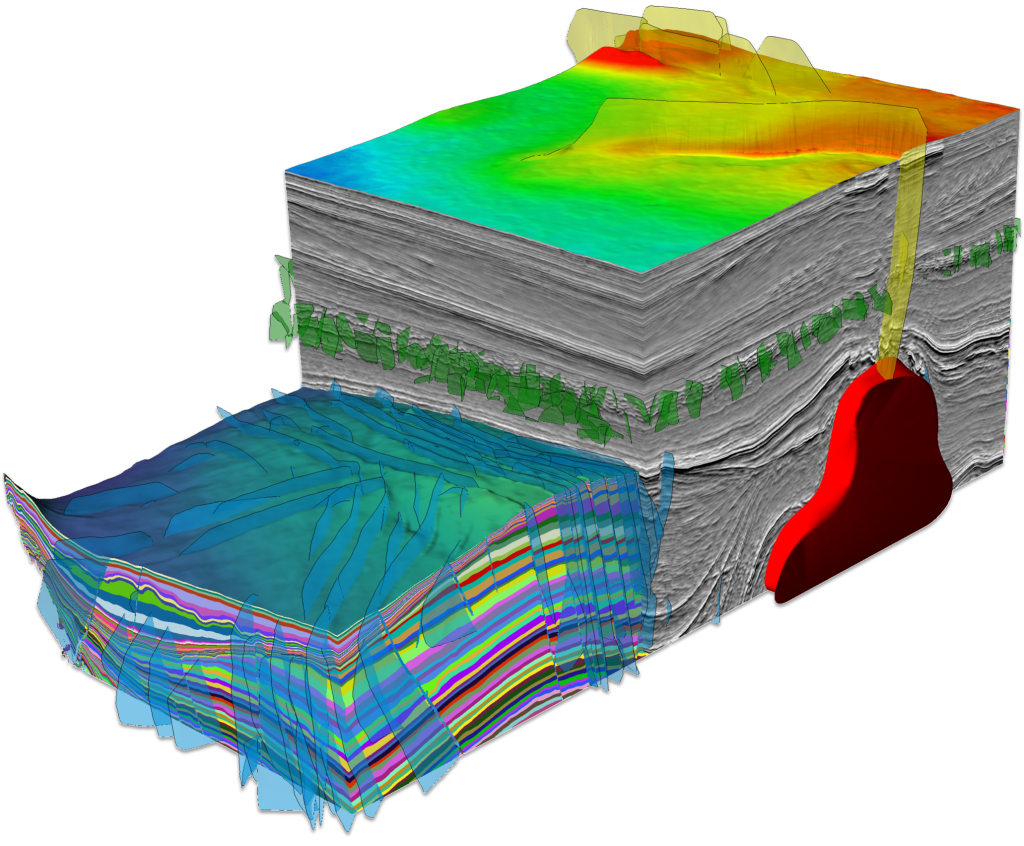
TIME/DEPTH
4D ATTRIBUTES
Characterize Baseline-Monitor Variability with 4D Attributes
Maturing oil fields and CO2 injection projects have supported the spectacular growth of 4D monitoring.
In PaleoScan™ users now have the possibility to generate 4D attribute volumes to characterize time/depth/amplitude shifts between baseline and monitor surveys and visualize them as volumes or geobodies.
DEPTH-DEPTH ADJUSTMENT
Identify and Correct Depth Mismatch with Depth-Depth Adjustment
Discrepancies between seismic, RGT models and well markets can now be tackled. After calibrating the RGT model, an automatic adjustment using well makers can be performed and applied to all geo-objects consistently.

2D SEISMIC
2D CONDITIONING & MISTIE CORRECTION
Streamline 2D Model-Grid Creating with Improved Conditioning and Mistie Correction
2D seismic data remains critical for New Venture teams, site investigation projects or geothermal data acquisition in populated areas.
PaleoScan™ now enables users to correct misties such as vertical shifts, phase rotations or amplitude balancing after choosing the reference line. This upgrade streamlines 2D Model-Grid creation especially when dealing with datasets of different vintages.
2D line names are now displayed in map-view.
DATA MANAGEMENT
NATIVE VDS
Streamline Data Management in PaleoScan with Native VDS
VDS eliminates the need to create additional volumes to optimize performance in IL/XL/Z-slide domain which saves space and is a new step in our OSDU® roadmap.
PaleoScan™ now has native support of the Volume Data Store (VDS) format, eliminating the need of external transcoders and ensuring interoperability. VDS files can be stored uncompressed but can also leverage adaptive compression in Lossless, virtually lossless and lossy tolerances. The PaleoScan™ workflows run natively on VDS and do not require temporary copies.

WELLS
Well Log Classification Aligned with OSDU®
On the wellbore side, we have now adopted the OSDU™ classification for log family and Main family categorization ensuring interoperability with other solutions. Markers have now richer attributes and geoscientists can assign log data directly to markers. In addition, advanced filtering is now available with improved visualization.
HORZONS
Horizon Quality Metadata
A new quality metadata generation tool enables users to efficiently assess and ensure the quality of horizons. The tool provides information related to the uncertainty of the horizon picks based on amplitude and frequency, displayed in the updated Metadata Info Tab.
Download the PALEOSCAN™ 2025 New Features Brochure


